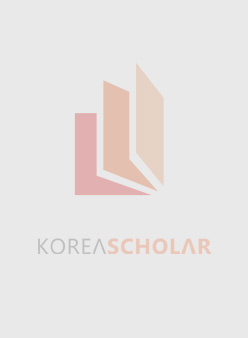간행물
The Yeats Journal of Korea KCI 등재 한국 예이츠 저널 Yeats Journal

- 발행기관 한국예이츠학회
- 자료유형 학술지
- 간기 연3회
- ISSN 1226-4946 (Print)2288-5412 (Online)
- 수록기간 1991 ~ 2025
- 주제분류 인문학 > 영어와문학 인문학 분류의 다른 간행물
- 십진분류KDC 841DDC 821
권호리스트/논문검색
Vol. 12 (1998년 12월) 9건
국제학술대회 환영의 말
1.
1998.12
구독 인증기관·개인회원 무료
2.
1998.12
구독 인증기관 무료, 개인회원 유료
4,500원
3.
1998.12
구독 인증기관 무료, 개인회원 유료
4,900원
4.
1998.12
구독 인증기관 무료, 개인회원 유료
4,300원
5.
1998.12
구독 인증기관 무료, 개인회원 유료
Yeats는 현대시인이라 이해하기 쉽다. 반면, Milton은 르네상스 시인이고 아주 복잡하고 어렵다. Milton은 당대에 뿐만 아니라 우리에게 어렵게 느껴진다. 그의 시어의 특징 때문이기도 한데, 당대의 독자에게도 그러했다. 그러나 위에서 보았듯이, 그의 시어와 시의 내용의 위대함에는 동의했다. Yeats도 자신의 주제에 적절한 표현 방식을 빚어낸다. 처음 그의 시를 대하면, 그의 시가 일상의 대화처럼 간결하게 명쾌해 보이나, 이른바 Keats가 말하는 다른 감각을 느끼게 한다. Milton과 Yeats 둘 다 음악적이나 다르게 느껴진다. Milton은 읽을수록 모던하게 느껴지며, 반면 Yeats는 퍽 신비롭게 다가와 어떤 왕국의 신비주의자처럼 느껴진다. Milton과 Yeats의 여성에 대한 태도를 보자. Milton은 사랑의 자유로움을 주장하지만 조심스러운 태도를 보이며, Yeats는 남성과 여성이 각기 다른 역할을 가진다고 믿는 것 같다. Yeats는 여인들과 정신적 육체적으로 깊은 관계를 맺는다. 위에서 비평가들이 지적 한대로, Milton 시어는 당대의 시어와도 달랐고, Yeats와는 아주 다르다. 그러나 이 두 시인들이 자극하는 상상력은 최고로 강렬하다. 왜냐하면 그들의 언어는 각기 다르지만, 가장 적절하고 효과적으로 작용한다. 시간과 공간이 둘을 가르고 있지만, 둘 다 좋은 시의 요소를 갖추고 있다. 두 시인은 전혀 다른 두 종류의 시를 썼으나, 우리에게 주는 감동은 마찬가지로 강렬하다.
4,300원
6.
1998.12
구독 인증기관 무료, 개인회원 유료
예이츠의 “The Double Vision of Michael Robartes”는 대개 그가 쓴 A Vision의 맥락에서 분석되어지고 있다. 즉 Ellmann, Bloom, Henn, 그리고 Bornstein 같은 비평가들은 시인이 서로 대립되는 세계로 분류한 제 일 장과 제 십오 장을 합일하려는 시도에 초점을 맞추어 이 시를 해석하고 있다. 하지만 아직 밝혀지지 않은 사실은 이 시는 전형적인 동양의 명상 과정을 모델로 그 구조가 이루어져있고 그 명상 의 목적은 육체나 영혼, 삶과 죽음, 그리고 움직임과 정지와 같은 서로 대립되는 세력의 조화로운 합일 뿐 만 아니라 동양과 서양의 합일이라는 예이츠의 정치적의식도 포함되어 있다는 것이다. 다시 말해 그가 그의 여러 글에서 주장했던 유럽과 아시아의 합일의 꿈이 자비를 의미하는 동양의 상징인 부처와 지성을 의미하는 서양의 상징인 스핑크스의 합일이라는 형식을 빌려 서서히 드러나기 시작했으며 이것으 로 우리는 그가 민족주의의 한계를 느껴 서서히 민족주의자에서 세계주의자의 의식으로 전환하고 있음을 알 수 있는 것이다. 그러나 그의 대부분의 시가 그렇듯이 동양과 서양의 결혼의 가능성에 대한 언급은 있지만 그것이 구체적으로 실현될 지에 대한 시인의 명확한 대답은 유보되어 있는 형편이다. 이는 예이츠가 평생을 바쳐 풀려다 결국 풀지 못한 초월세계에 대한 의구심 때문이 아닌가 한다.
4,000원
7.
1998.12
구독 인증기관 무료, 개인회원 유료
Irish literature since Free State has shown Anglo-Irish predicament, reflecting the hope of Gaelic Revival armed with catholicism and strong nationalism. However ultimately Irish literature is to recover the conflicts of the colonized hybridity, and to make a common-ground for the interest of all Irish people. In the connection with this, it is very interesting that we should frequently meet with the word ‘violence’ in Irish literary history. Aesthetical transformation of the historical violence is featured in most of modern Irish poets in the sense that a poet as a subject shows some response to the violence as a part of his own poetic experiences. The violence in Heaney’s and Yeats’s poetry is concerned with the problem who holds the hegemony in the independent Irish society. Yeats and Heaney stand on the opposite social position and represent the race they respectively belong to.-Yeats represents Anglo-Irish and Heaney the Gaelic. I think Yeats mainly depends on satire to express his disgust against the newly emerging catholic middle class. whereas Heaney seems to express his resistance rather secretly by combining lyricism and violence. The combination of the two heterogeneous elements in Heaney’s poetry not only expresses the poet’s resistance to violence effectively but brings forth the sense of beauty which is made by applying the aesthetic theory of ‘discordia concors’ and ‘defamiliarisation’ etc. Besides creating beauty, the combination of lyricism and violence suggests fixing the temporary time of violence to the permanent space. In addition, it suggests an Irish realistic attitude in front of the oppressed situation as well as their pride in Irish landscape. At the same time, it reflects the poet’s spirit for transcending two binary concepts and accepting coexistence in difference. Yeats attacks the philistine by using the tone of satire. Narrator, imaging the ideal world, alienated from the materialized mass, evokes the romantic heroism, and inspires the mood of tragic joy. Meanwhile the beauty Yeats evokes involves the praise of harmonious individuality full of life energy without digressing from the European aristocratic spirit. In conclusion, poetry can be a strategic weapon especially in a destitute time. Yeats, by evoking the mood of ‘tragic rapture’ and by poignantly satirizing the catholic middle class as philistines, tries to save Anglo-Irish from their declining fate. Meanwhile Heaney, combining lyricism and violence as one way of aestheticization, shows his resistance against the historical violence without losing the sense of beauty. These poetics as two main streams still coexist in modern Irish literary history. And yet they all contribute to establishing Irish literature on one common-ground and making Irish literature merge into the international literature. Although they represent the different interests of two classes, they illuminate the new possibility of coexistence in difference.
4,600원
8.
1998.12
구독 인증기관 무료, 개인회원 유료
4,800원
Book Review
9.
1998.12
구독 인증기관 무료, 개인회원 유료
3,000원

